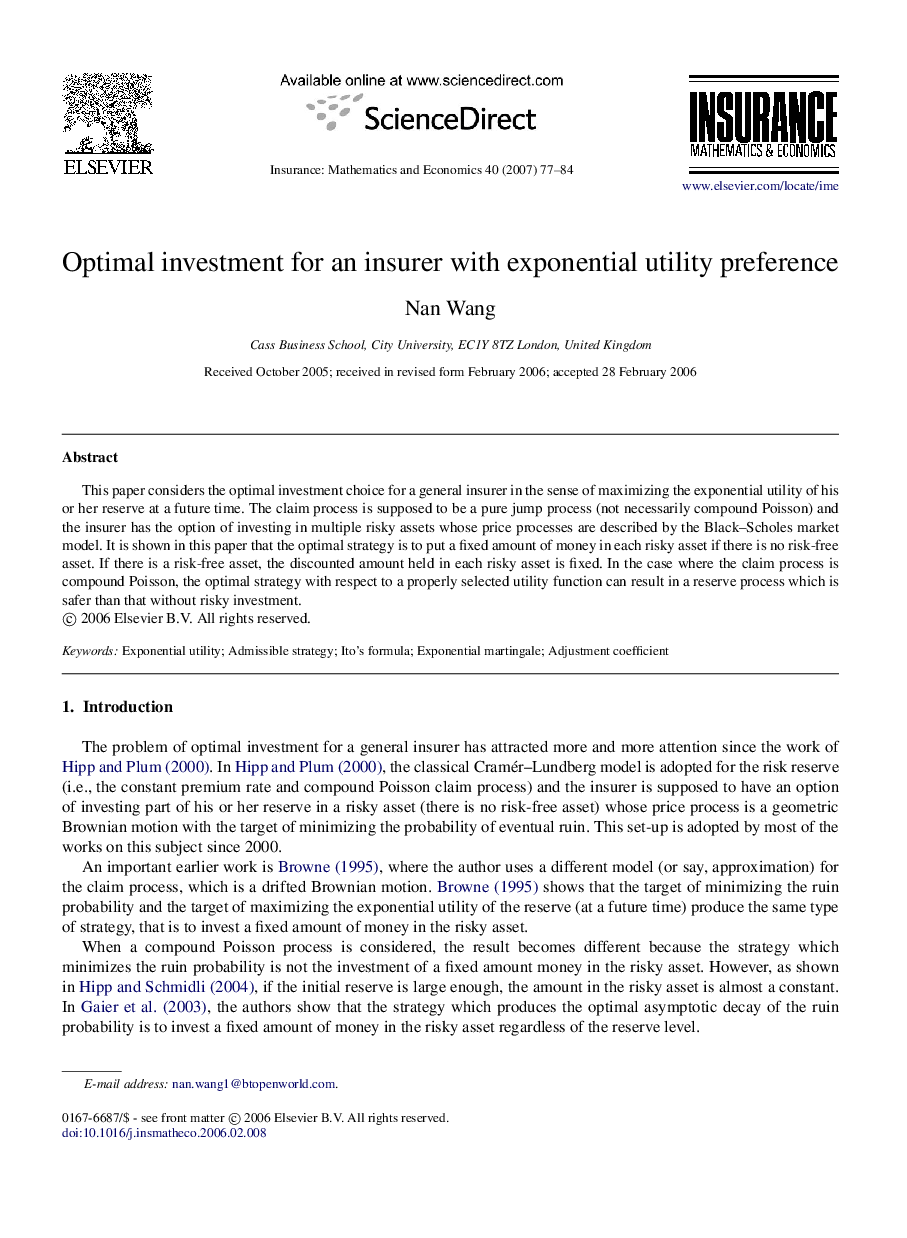| Article ID | Journal | Published Year | Pages | File Type |
|---|---|---|---|---|
| 5077589 | Insurance: Mathematics and Economics | 2007 | 8 Pages |
Abstract
This paper considers the optimal investment choice for a general insurer in the sense of maximizing the exponential utility of his or her reserve at a future time. The claim process is supposed to be a pure jump process (not necessarily compound Poisson) and the insurer has the option of investing in multiple risky assets whose price processes are described by the Black-Scholes market model. It is shown in this paper that the optimal strategy is to put a fixed amount of money in each risky asset if there is no risk-free asset. If there is a risk-free asset, the discounted amount held in each risky asset is fixed. In the case where the claim process is compound Poisson, the optimal strategy with respect to a properly selected utility function can result in a reserve process which is safer than that without risky investment.
Related Topics
Physical Sciences and Engineering
Mathematics
Statistics and Probability
Authors
Nan Wang,
